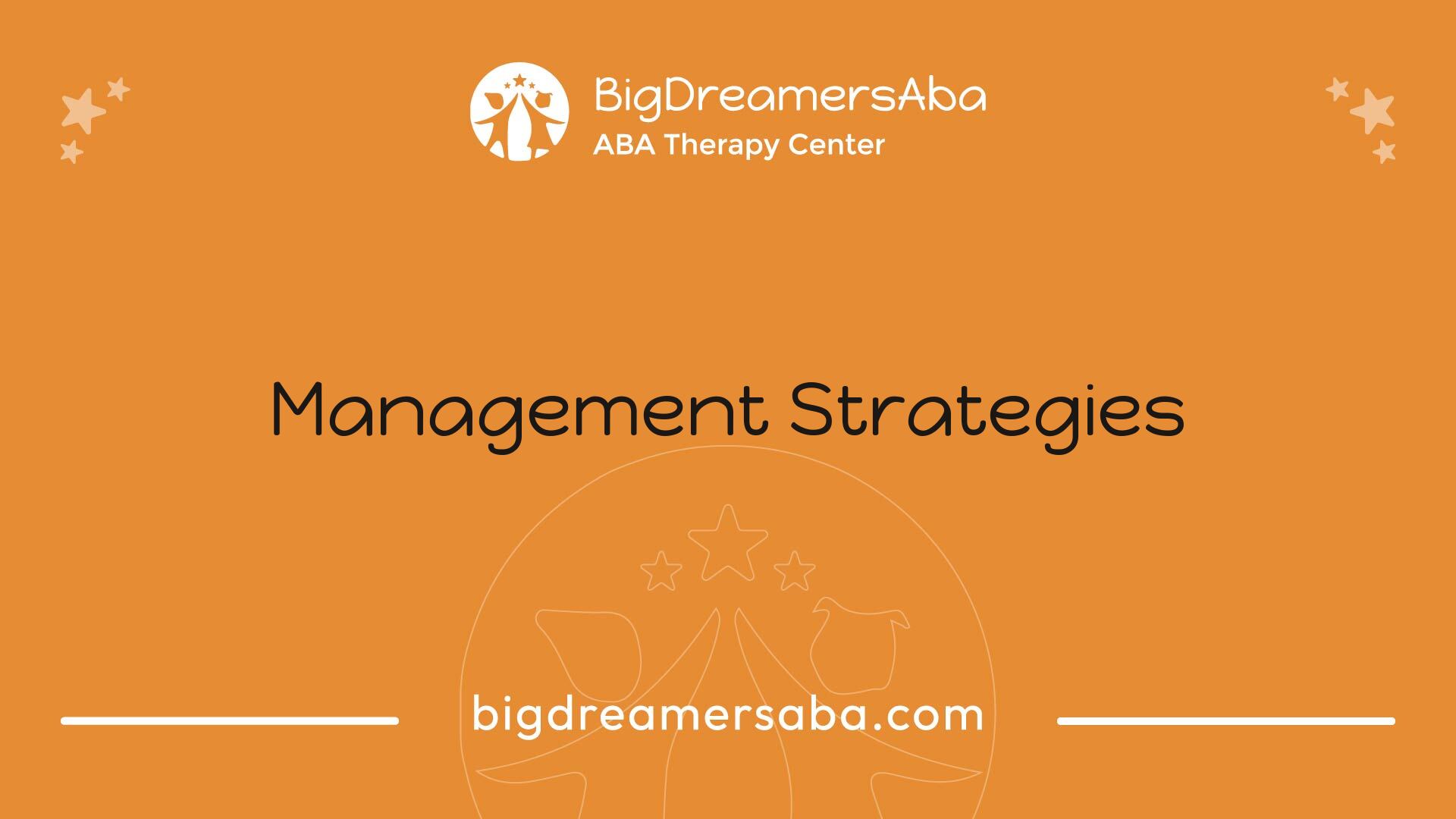Visual Stimming: Exploring Beyond the Autism Association
Is visual stimming always autism? Discover its causes, types, and management strategies for all individuals.

Understanding Visual Stimming

Visual stimming refers to repetitive visual behaviors that individuals may engage in as a means of managing sensory experiences. While it is often associated with autism, it is not exclusive to individuals on the autism spectrum.
Visual Stimming in Autism
Visual stimming is prevalent among individuals on the autism spectrum, serving as a self-regulatory mechanism to cope with sensory overload or self-soothe. However, it is important to note that not all individuals with autism engage in visual stimming, and its presence or absence does not determine an autism diagnosis Adina Consulting.
Research indicates that visual abnormalities are observed in approximately 95% of children with Autism Spectrum Disorder (ASD). These abnormalities can include heightened sensitivity to sensory stimuli, impacting their ability to navigate complex social environments while sometimes enhancing particular skills, such as those seen in individuals with Savant syndrome NCBI.
Types of Visual Stimming
Visual stimming can take many forms, which may include:
Type of Visual StimmingDescriptionStaring at lightsIndividuals may focus intently on bright lights or patterns.Watching spinning objectsThe repetitive motion can be captivating and soothing.Flickering or waving objectsCreating movement with hands or objects can be visually stimulating.Tracking movementsFollowing the path of moving objects or animations offers engagement and focus.
Understanding these behaviors is essential in interpreting the experience of individuals with autism and exploring effective ways to support and manage these behaviors. For more information on specific examples, check out our article on examples of visual stimming.
While visual stimming is commonly associated with autism, individuals without autism can also engage in similar visual behaviors. It is crucial to recognize the unique context and individual differences when interpreting visual stimming behaviors. This mindful approach informs appropriate interventions or support strategies as seen in visual stimming treatment.
Causes and Purposes

Understanding the reasons for visual stimming involves looking into its roles as coping mechanisms and its function for sensory soothing.
Coping Mechanisms
Visual stimming can serve as a coping mechanism for individuals, particularly children, who experience autism. These behaviors may help in adapting to unfamiliar environments, reducing anxiety, expressing frustration, or avoiding certain activities and expectations. Through engaging in visual stimming behaviors, individuals can stimulate their senses and find an effective way to manage their emotions. Examples of such behaviors include staring at objects, repetitive blinking, or gazing. According to Heal is Autism, stimming behaviors help in dealing with sensory overload or when confronting challenges in social and physical environments.
The table below summarizes some common stimming behaviors associated with coping mechanisms:
Stimming BehaviorPurposeStaring at objectsTo focus or calm downRepetitive blinkingTo relieve eye strainHand-flappingTo release pent-up energy or excitementObject placementTo create order and predictability
Sensory Soothing
Visual stimming also plays a significant role in sensory soothing. It can help individuals self-soothe, particularly when they are overwhelmed by external stimuli. This form of stimming may particularly benefit children with undiagnosed visual acuity or convergence problems, which can strain their eyes. Engaging in visual stimming can alleviate these discomforts while providing a sense of comfort and control in chaotic environments.
While visual stimming is common among those on the autism spectrum, not every individual engages in these behaviors. Its presence (or absence) should not be seen as a definitive indicator of autism, as stimming can occur in various contexts for different individuals.
For those seeking further information about visual stimming, including treatment options, check our articles on visual stimming treatment and examples of visual stimming.
Management Strategies

Managing visual stimming behaviors involves both addressing the behaviors themselves and providing support to individuals who engage in them. Understanding the reasons behind these behaviors can enhance effective management strategies.
Addressing Behaviors
To manage visual stimming effectively, it is crucial to understand the root causes of these behaviors. Strategies that focus on reducing sensory demands, offering distractions, or engaging in sensory diet activities can be beneficial. For instance, if a child displays visual stimming behaviors due to being overwhelmed by certain stimuli, adjustments in the environment may help.
StrategyDescriptionReducing Visual DistractionsMinimizing clutter and bright colors can create a calmer space.Using Dim LightingDimming lights or utilizing softer lighting can lessen discomfort.Tinted SunglassesOffering lightly tinted sunglasses can help those sensitive to bright lights.
These adjustments aim to create a comfortable environment, allowing individuals to engage in stimming behaviors in a more manageable context. Research indicates that individuals with autism may stim as a response to various emotional states, such as feeling overwhelmed, anxious, or even excited [2]. Recognizing these triggers can further aid in developing effective strategies.
Supporting Individuals
Supporting individuals who engage in visual stimming involves acknowledging the benefits of these behaviors. Stimming can play a significant role in self-regulation, helping individuals manage their body and emotions. By providing alternatives and supportive measures, caregivers and educators can enhance the well-being of those who stim.
For example, incorporating sensory diet activities can provide outlets for energy and improve focus on challenging tasks. It is vital to recognize that stimming serves a purpose for individuals, even if it may be misinterpreted by others.
In addition, understanding the communicative function of stimming can illuminate the inner emotional states of autistic individuals. This understanding can foster empathy and tailored approaches that help individuals feel seen and supported.
Engaging in discussions about what is visual stimming? with families and caregivers can normalize these behaviors, while also exploring options like visual stimming toys to create a sense of safety and comfort. Ultimately, it's important for those around individuals who engage in stimming to offer understanding and support rather than discourage these natural behaviors.
Different Contexts
Neurodivergent Experiences
Visual stimming, a form of self-stimulatory behavior, can be observed in individuals with various neurodevelopmental conditions, as well as in those without any specific diagnosis. This behavior serves different purposes depending on the individual [5]. Common examples of self-stimulatory behaviors include nail-biting, hair twirling, and finger tapping. These repetitive motions or sounds often function as habits that help individuals self-soothe or provide a sense of comfort.
Ongoing research seeks to elucidate the reasons behind stimming behaviors in individuals with autism. Such individuals may engage in stimming when experiencing feelings of overwhelm, excitement, anxiety, or joy. This behavior can also serve as a means of comfort, with many individuals finding it challenging to control or cease stimming during stressful situations or negative emotional states [2].
Understanding the context of neurodivergent experiences highlights that stimming behaviors offer familiar and reliable self-generated feedback. Individuals with autism often report using stimming to create a soothing rhythm that helps cope with overwhelming or distorted sensory perceptions.
Stimming BehaviorsPurposeNail-BitingSelf-soothingHair TwirlingStress reliefTapping FingersEmotional regulation
Individual Differences
While stimming behaviors are often linked to autism, it is important to note that these behaviors are not exclusive to autistic individuals. Many people, regardless of diagnosis, engage in stimming as a means of emotional regulation and coping. Individuals with autism might experience heightened sensory perceptions, which can make their stimming behaviors more pronounced and varied. As a result, the intensity and nature of stimming behaviors can differ widely among individuals [6].
Each person may have unique triggers and responses, influencing the frequency and types of stimming they exhibit. There are many ways to express stimming, and it's important to recognize and respect these individual differences, especially when considering treatment and support options. Various strategies are available for visual stimming treatment, tailored to meet the unique needs of each person. Understanding these differences can lead to more effective support and a deeper appreciation of the complexities surrounding stimming in the context of autism and beyond.
Stimming in Neurodevelopment
Stimming, or self-stimulatory behavior, plays a significant role in the neurodevelopment of individuals, particularly those with Autism Spectrum Disorder (ASD). Understanding how stimming functions within this context can help clarify its importance and impact on emotional regulation.
Stimming in ASD
In the context of ASD, stimming is often described as repetitive and rhythmic behavior, which can manifest through various expressions such as hand flapping, rocking, or vocalizations like muttering or singing. This behavior is typically experienced as involuntary and unconscious at the onset, allowing individuals to express their emotions and maintain self-regulation under distressing circumstances.
Research indicates that autistic individuals frequently engage in stimming when they are feeling overwhelmed, excited, anxious, or even happy. These behaviors serve as a coping mechanism to navigate distorted perceptions and manage uncertainty [2]. This allows individuals to find comfort amidst chaotic environments, making stimming an essential adaptive mechanism rather than a behavior that needs to be eliminated.
Type of StimmingDescriptionHand FlappingRepetitive movement of the hands that can express excitement or anxiety.RockingRhythmic swaying back and forth, often providing sensory feedback and comfort.VocalizationsSounds made, such as humming or grunting, expressing feelings or emotions.
Impact on Emotional Regulation
Stimming plays a critical role in emotional regulation for individuals with ASD. The rhythmic and predictable nature of stimming provides familiar feedback, helping to soothe intense emotions like anxiety and distress. Autistic adults report that engaging in stimming allows them to create a soothing rhythm, which aids in coping with overwhelming stimuli or situations.
Understanding the mechanisms behind stimming can clarify its impact on the emotional well-being of autistic individuals. By incorporating stimming as a part of therapeutic practices, supporters can facilitate healthier emotional regulation strategies. This not only validates the necessity of stimming behaviors but also recognizes them as essential to the overall management of emotional states. For further information on stimming, check our article on what is visual stimming?.
Visual Perception in ASD
Understanding visual perception in individuals with Autism Spectrum Disorder (ASD) reveals important insights into their sensory experiences and behaviors. This section explores visual abnormalities and sensory behaviors associated with ASD.
Visual Abnormalities
Individuals with ASD often exhibit unique visual perceptual abnormalities. Some common traits include:
These visual nuances significantly impact how individuals with ASD interact with their surroundings. According to research, vision is the most critical sensory modality, as up to 80% of the information processed by the brain is visual [7]. Neuroimaging studies indicate that individuals with ASD show heightened activation in specific brain regions, such as the primary visual cortex and extrastriate cortex, during visual detection tasks. Conversely, they tend to exhibit reduced activity in frontal regions compared to typically developing individuals.
TraitDescriptionLocal Detail FocusTendency to concentrate on single elements rather than the overall pictureSuperior Visual DetectionEnhanced ability to detect visual details that may go unnoticed by othersMotion Perception ChallengesDifficulty in recognizing global motion and biological movements
Sensory Behaviors
Sensory behaviors in individuals with ASD often manifest in various ways, significantly impacting their daily lives. Atypical sensory behaviors can include:
Approximately 95% of children with ASD exhibit sensory abnormalities, making these behaviors a critical symptom of the condition [7]. These sensory intricacies may contribute to challenges in emotional regulation and social interactions, as early sensory development appears to influence later social communicative symptoms in infants with ASD.
For more information on sensory behaviors related to autism, including specific examples of visual stimming and resources for visual stimming treatment, explore additional articles linking these themes. Understanding these behaviors helps clarify how visual stimming might not always signify autism, as it can also appear in other contexts.
References
[2]:
[3]:
[4]:
[5]:
[6]:
[7]:
Recent articles
.jpg)
Autism Services for Kids in Maryland

In-Home Support Services for Autism
